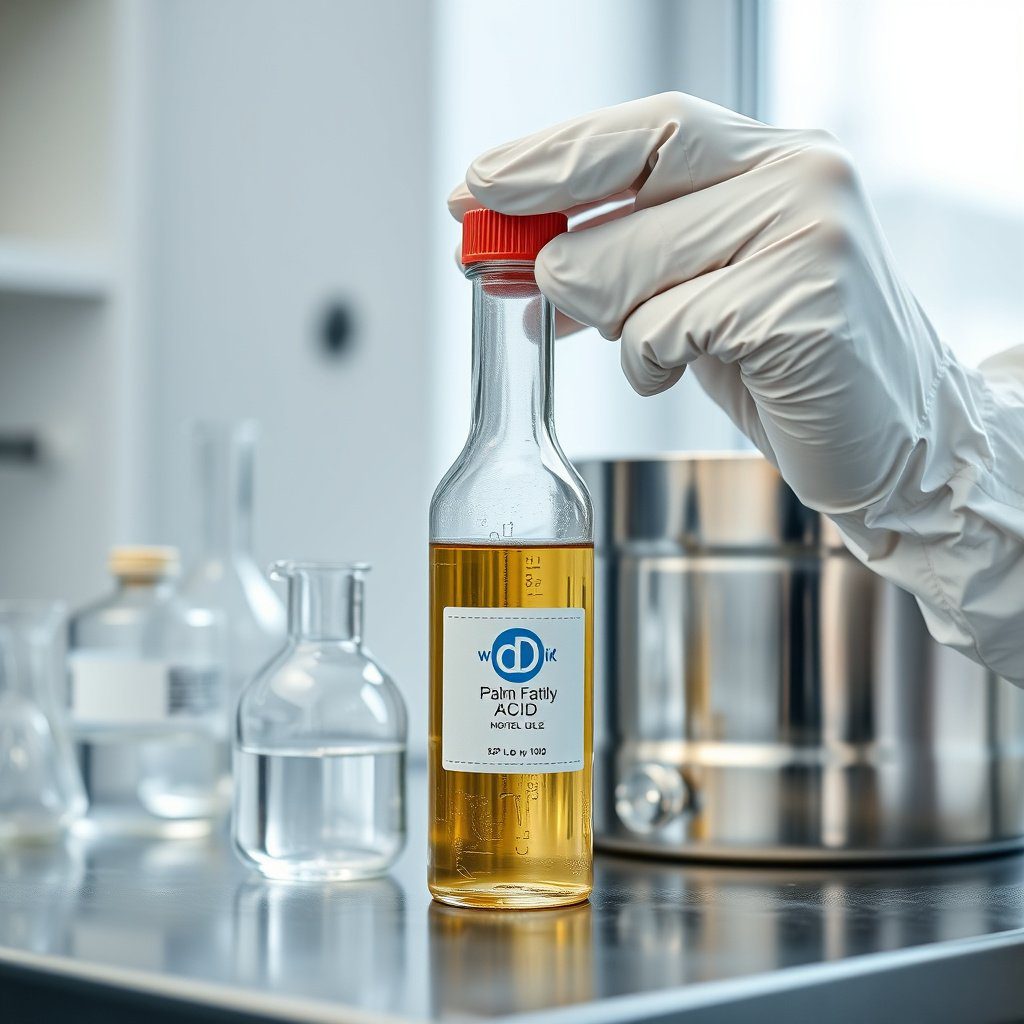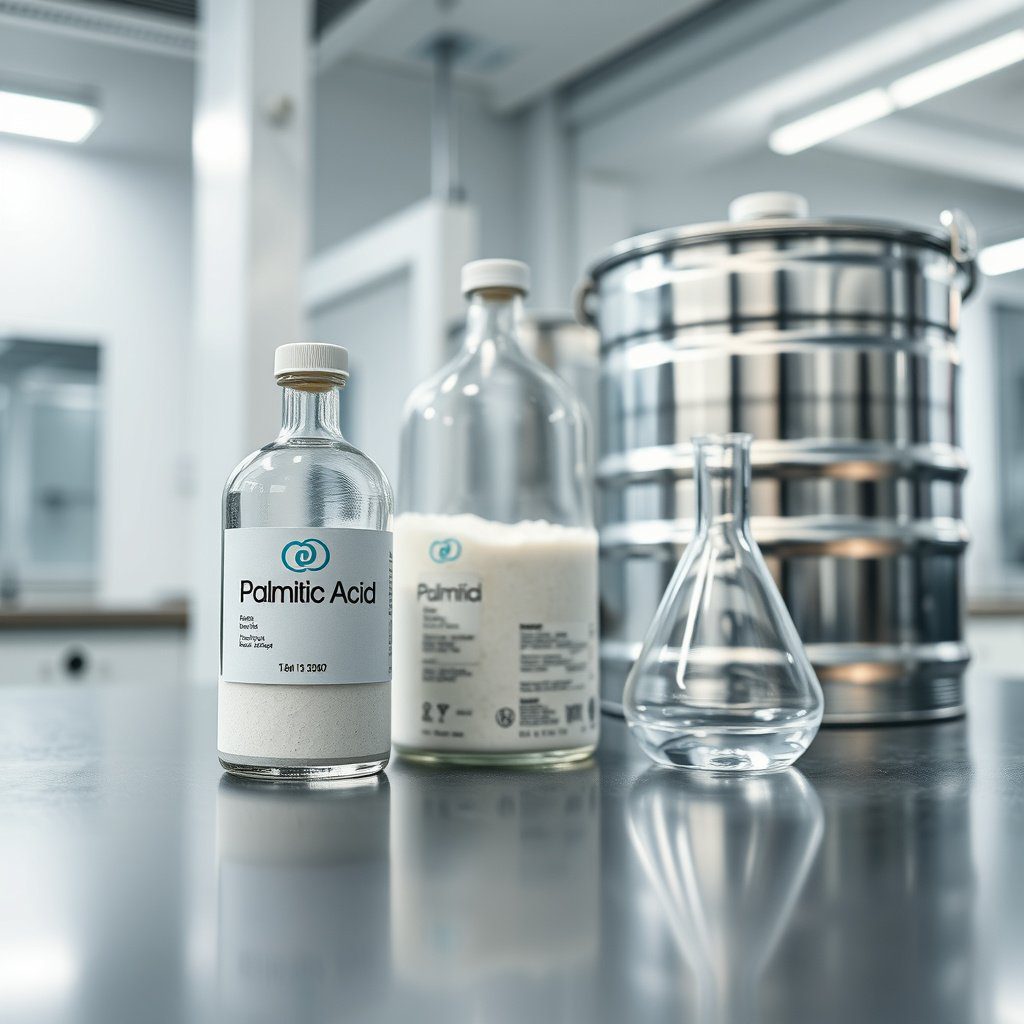In the palm fatty acid supply market, a practical due diligence checklist is the difference between a stable, compliant partnership and a venture plagued by delays, quality issues, or regulatory pitfalls.
This guide translates years of hands-on experience from a leading chemical and oleochemical distributor into actionable steps that procurement and sourcing teams can apply right away.
It combines rigorous technical checks with a commercial lens, ensuring that every contract for palm fatty acid products aligns with your operational needs, risk appetite, and sustainability standards.
With more than two decades in the field, Diplomata Comercial has refined a systematic approach to supplier qualification, documentation, and ongoing governance that protects value across the supply chain.
By adopting this framework, your organization gains clarity, consistency, and a reliable pathway to scale—whether you source basic oleochemicals or advanced blends tailored to HPPC, pharma, or nutrition applications.
The goal is clear: reduce uncertainty, improve traceability, and secure continuous, compliant supply through well-structured contracts.
Due Diligence Checklist for Palm Fatty Acid Supply Contracts: A Practical Guide
Begin with a structured due diligence mindset that covers capabilities, quality, and compliance.
This section outlines a method to assess suppliers before signing any palm fatty acid supply contract, helping your team avoid common blind spots.
Supplier qualification framework
Establish a formal framework to evaluate potential partners.
Create a scoring system that weighs capacity, quality control, and regulatory alignment.
Documented processes should include a clear pass/fail criterion for on-time delivery, batch consistency, and incident response.
Include a minimum acceptable level for traceability, CoA availability, and test results.
In practice, you’ll map each candidate against your internal requirements, then perform a risk-adjusted shortlist.
This avoids ad hoc decisions and reinforces a data-driven approach to procurement.
Commercial terms and risk allocation
Define risk sharing upfront.
Use contract language that clarifies liability, force majeure, and remedies for non-conformance.
Align pricing mechanics with your cost structure and volatility tolerance.
Consider price adjustment clauses tied to raw material indices, with clear caps and floors to prevent sudden swings.
Incorporate service levels and performance credits tied to delivery reliability and metrology outcomes.
A well-specified SLA reduces escalation cycles and supports smoother operations.
Compliance and documentation standards
Require a robust documentation package.
This should include CoA, MSDS, purity profiles, and batch records for each lot.
Establish a repository for all certificates of analysis, supplier audits, and corrective action plans.
Accessibility and version control are essential for quick risk assessment.
Ensure that documentation supports regulatory audits in relevant markets, such as the United States, European Union, and Brazil.
This readiness is a cornerstone of a resilient supply chain.
Assessing Supplier Capabilities: Production Scale, Quality Assurance, and Traceability
Reliable supply starts with the supplier’s ability to meet demand while maintaining stringent quality.
This section focuses on how to gauge production capacity, quality systems, and traceability across the palm fatty acid value chain.
Production capacity and continuity planning
Analyze nominal capacity versus peak demand and seasonal fluctuations.
Look for evidence of redundancy in production lines and contingency sourcing for raw materials.
Request production calendars, maintenance schedules, and outage histories.
Transparency on downtime frequency helps you model supply continuity and safety stock needs.
Assess lead times and the supplier’s ability to scale.
A partner with scalable capacity reduces the risk of stockouts during market volatility.
Quality management systems and certifications
Evaluate the maturity of the supplier’s quality program.
Prioritize partners with formal QA processes and documented corrective actions.
Look for industry-standard certifications or equivalent programs that demonstrate commitment to consistency.
Examples include general quality management frameworks and product-specific QA protocols.
Consider third-party QA arrangements, such as independent testing or annual audits, to corroborate internal results.
Independent verification strengthens confidence in quality claims.
Chain of custody and traceability measures
Demand end-to-end traceability from feedstock to finished product.
A robust chain of custody supports risk management and regulatory compliance.
Assess how materials are tracked across suppliers, transport, and storage.
Reliable systems reduce the likelihood of mix-ups and enable faster recalls if needed.
Document data integrity practices, including data capture standards, audit trails, and secure data storage.
Strong traceability is a competitive differentiator in oleochemical sourcing.
Quality Standards, Certifications, and Documentation You Need
Quality is non-negotiable in palm fatty acid supply.
This section details the essential documents, tests, and certifications that validate product integrity and safeguard your downstream processes.
Certificates, test results, and documentation packages
Require a current Certificate of Analysis (CoA) for every batch, with explicit fatty acid composition, impurities, moisture, and acid value.
CoA should align with your internal specifications.
Standard documentation should also include batchka records, packaging specs, and transport conditions.
Clear documentation accelerates regulatory reviews and customer audits.
Implement a standard operating procedure for document validation and version control.
Consistency reduces misinterpretations and improves supplier accountability.
Product specifications: fatty acid profile and impurity controls
Define target ranges for key parameters such as palmitic and stearic acid content, acidity, moisture, and contaminants.
Ask for lot-specific data alongside a trend analysis to identify shifts over time.
Proactive trend monitoring can flag emerging quality issues before they affect production.
Sampling plans, laboratory methods, and compliance checks
Outline sampling frequency, sample size, and acceptance criteria.
Specify approved laboratory methods and references for test methods to avoid disputes.
Include compliance checks for environmental, health, and safety standards.
Consistent audits help ensure ongoing adherence to industry norms.
Commercial Terms and Legal Framework: Pricing, Incoterms, and Compliance
Beneath the numbers lies a legal framework that protects value, ensures predictability, and supports scalable partnerships.
This section covers pricing structures, delivery terms, and regulatory commitments essential to palm fatty acid supply contracts.
Pricing mechanisms and payment terms
Choose pricing models that reflect market dynamics and your procurement strategy.
Consider fixed, indexed, or hybrid pricing, with transparent calculation formulas.
Establish payment terms that align with cash flow realities and supplier risk.
Include late payment penalties that are fair and enforceable.
Document currency exposure and hedging considerations if applicable.
Currency management reduces unintended financial risk in international deals.
Incoterms, delivery schedules, and risk transfer
Define the delivery framework using recognized Incoterms.
Clarify which party bears transport risk at each stage and who is responsible for loading, unloading, and insurance.
Set realistic delivery schedules with milestones and buffers for potential delays.
Contingency clauses help maintain service levels under disruption.
Include packaging, labeling, and regulatory labeling requirements to avoid import/export hold-ups and non-compliance findings.
Regulatory compliance and export controls
Ensure alignment with applicable regulations in key markets, including U.S.
FDA/USDA considerations where relevant, EU食品 directives, and Brazilian chemical import rules.
Request documented processes for regulatory updates and supplier monitoring.
A proactive approach minimizes regulatory risk and helps sustain long-term supply.
Risk Management and Contingency Planning in Palm Fatty Acid Supply
A proactive risk lens protects your business from disruptions.
This section helps you design a resilient strategy for supply interruptions, quality incidents, and operational shocks.
Supply disruption risk and inventory strategies
Identify potential disruption sources, such as supplier outages, transport bottlenecks, or geopolitical factors.
Map a risk heat map to prioritize mitigations.
Develop inventory policies that balance working capital with service levels.
Consider safety stock, buffer SKUs, and alternate supply sources to cushion volatility.
Establish a formal playbook for rapid supplier communication and escalation to keep operations running smoothly during events.
Quality incident response and recall protocols
Prepare incident response plans that outline roles, notification timelines, and corrective action steps.
A clear plan reduces time-to-resolution and protects brand integrity.
Define recall protocols and responsibilities, including traceability checks to isolate affected lots quickly and minimize impact.
Business continuity and cyber-resilience
Address continuity for information systems, data integrity, and supplier portals.
Strong cyber-resilience protects sensitive contracts, CoA data, and shipment information.
Incorporate regular tabletop exercises with suppliers to test response readiness and improve coordination under stress.
Sustainability, ESG, and Regulatory Compliance in Palm Fatty Acid Sourcing
Environmental, social, and governance considerations are integral to modern palm fatty acid sourcing.
This section highlights practical steps to align procurement with responsible practices and stakeholder expectations.
Deforestation risk, supplier audits, and remediation
Assess deforestation risk in the supply chain and require evidence of responsible sourcing practices.
Regular supplier audits help verify commitments and progress.
Implement a remediation plan for identified gaps, with clear timelines, accountable owners, and measurable outcomes.
Documentation supports transparency and continuous improvement.
Emissions, waste, and responsible packaging
Encourage packaging optimization and waste reduction throughout the value chain.
Track emissions from production, transport, and handling to support sustainability reporting.
Adopt best practices for packaging materials that protect product integrity while minimizing environmental impact.
ESG reporting and stakeholder communication
Prepare concise, auditable ESG data that aligns with investor and regulatory expectations.
Transparent reporting strengthens supplier relationships and market trust.
Include a framework for ongoing supplier engagement on ESG topics, with milestones and recognition for progress.
Next Strategic Steps
To operationalize this due diligence approach, start by aligning your procurement team around a standardized checklist and governance model.
Reach out to trusted partners with documented capabilities, including traceability, QA, and compliance records.
Use your internal QA and regulatory teams to validate supplier adequacy, then pilot with a shortlist of Palm Fatty Acid suppliers who meet your technical and commercial criteria.
The Diplomata Comercial experience—built on 20+ years of international chemical and oleochemical distribution—provides a robust reference framework for evaluating and onboarding suppliers that deliver consistent quality, reliable supply, and scalable solutions.
If you are ready to elevate your palm fatty acid sourcing strategy, contact our team to tailor a due diligence program aligned with your procurement goals and compliance standards. Qualified partners and well-structured contracts translate into healthier margins and smoother operations across your value chain.
Frequently Asked Questions
What is the purpose of a due diligence framework for palm fatty acid supply contracts?
A due diligence framework provides a structured, risk-based method to evaluate potential suppliers before signing. It focuses on capabilities, quality systems, and regulatory alignment, translating findings into a transparent pass/fail process. This approach helps avoid supply disruptions and misaligned expectations.
Which supplier qualification criteria matter most for palm fatty acids?
Key criteria include capacity to meet demand, robust quality control and QA procedures, regulatory compliance, and sustainability credentials. It should also cover traceability, CoA availability, and the ability to provide consistent batch data. A scoring system helps create a risk-adjusted shortlist.
How should traceability be integrated into palm fatty acid agreements?
Traceability should be documented for every batch, with accessible CoAs and clear chain-of-custody records. Require mapping from raw materials through production to finished products, plus recall readiness. This transparency supports quality, safety, and regulatory compliance.
What should be included in the CoA policy for palm fatty acid procurement?
Require a CoA per batch, specify testing methods and acceptance criteria, and indicate any third-party verification when applicable. Ensure CoA records are easy to access and retained for audits. Define consequences for missing or defective certificates.
How can I verify regulatory alignment in palm oleochemical contracts?
Verify compliance with applicable laws, certifications (such as sustainability schemes), and product-specific quality standards for target applications. Include contractual clauses that require ongoing regulatory adherence and the right to perform audits. Documented governance around regulatory changes is essential.
Why is incident response important in the palm fatty acid supply process?
An established incident response plan defines detection, notification, root-cause analysis, and corrective actions with defined timelines. It helps minimize downtime and protect value across the supply chain. Clear escalation and communication protocols are part of a resilient framework.
What metrics help ensure on-time delivery and batch consistency?
Track delivery performance, lot-to-lot quality consistency, and defect rates, along with a robust change-control process. Use these KPIs to inform risk-based shortlisting and ongoing supplier evaluation. Regular performance dashboards support proactive management.
How should ongoing governance and supplier development be managed after contract award?
Establish regular performance reviews, audits, and supplier development plans. Maintain clear escalation paths, governance documents, and continuous improvement initiatives to sustain a reliable, compliant supply chain. This ongoing oversight helps scale operations confidently.





